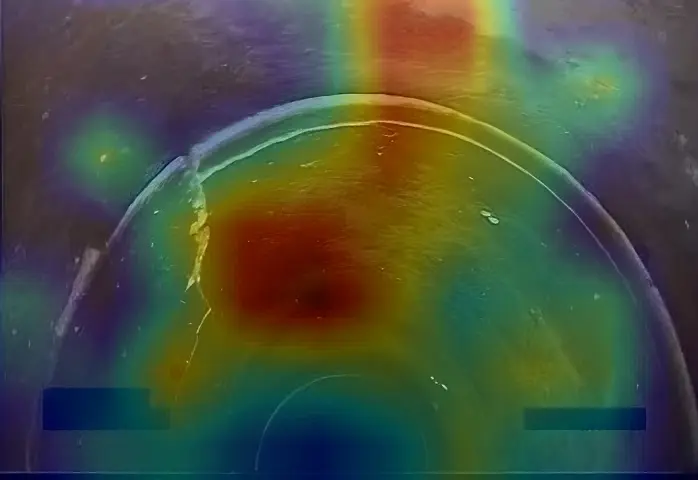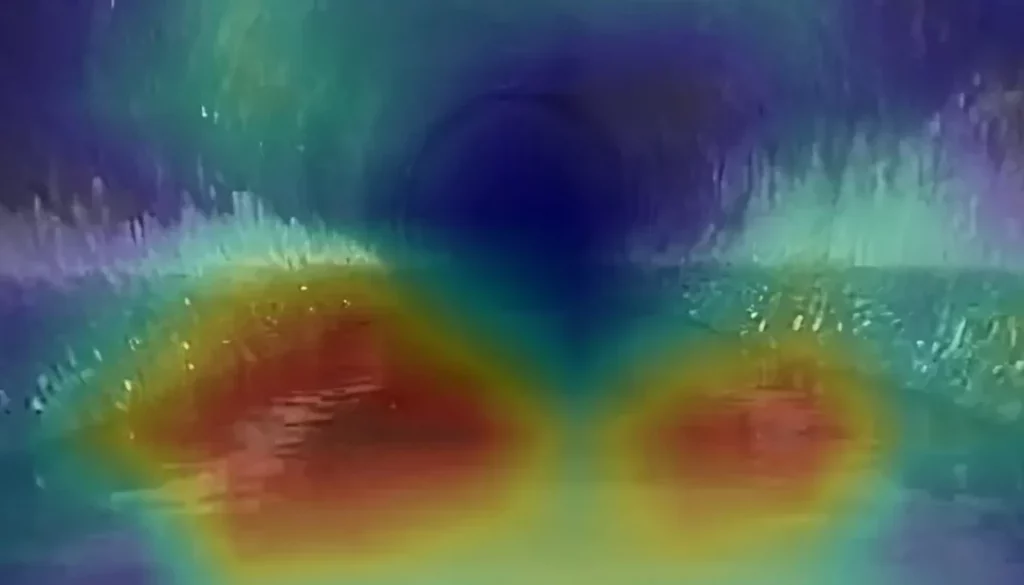Artificial intelligence in sewage systems
Artificial intelligence in sewer systems is an emerging technology that uses advanced algorithms and machine learning techniques to improve the management and performance of sewer networks.
It has the potential to revolutionize the way we monitor, maintain and optimize our sewerage infrastructure. It involves the application of artificial intelligence algorithms to analyze sewer inspection data, such as CCTV images, to identify and classify defects in sewer pipes.
How does sewer artificial intelligence work?
Sewer artificial intelligence (AI) is a technology that uses AI algorithms to analyze data from closed-circuit television (CCTV) inspections of sewer pipes. Its objective is to assess the condition of the underground sewage infrastructure and identify possible defects or problems. Is that how it works:
-
Data Collection: CCTV inspections are carried out to capture video images of the sewer pipes. These inspections involve sending a camera-equipped robot or crawler into the sewer system to record the condition of the pipes.
-
Data upload: The recorded CCTV footage is uploaded to a cloud platform specifically designed for sewerage data, such as SEWDEF. This platform securely stores data and makes it accessible for analysis.
-
Artificial Intelligence Analysis: AI algorithms analyze CCTV footage to automatically detect and identify various types of defects in sewer pipes. These defects include breakage, displacement, cracking, corrosion, clogging, or other structural problems.
-
Deterioration modelling: AI is used to develop deterioration models for sewer pipes based on CCTV data. These models are intended to predict the future state of the pipelines and estimate their remaining useful life.
-
Analysis and decision support: AI platforms like SEWDEF provide analysis tools that help asset planners prioritize repair and maintenance activities.
-
Collaboration and Workflow Optimization: SEWDEF enables collaboration between engineers, asset planners, and field teams. It streamlines workflows, speeds the production of CCTV inspections and raises the quality of sewer data analysis.
In summary, sewer AI technology offers several benefits, including reduced costs, increased efficiency, and better-informed decision-making.
By automating the analysis of CCTV images, you reduce the need for manual inspection and speed up the evaluation process. This technology also improves collaboration and communication between stakeholders involved in the management of sewerage infrastructure.
Why sewer AI is so important?
Sewerage AI is important because it improves efficiency in sewage management, prevents diseases, reduces costs and protects the environment. Below we see the importance in detail:
-
Efficient sewer management: Artificial intelligence helps optimize the operation of sewer systems by predicting and preventing problems such as blockages, leaks, and overflows. By analyzing data from sensors, flow meters and other sources, AI algorithms identify patterns and anomalies, enabling proactive maintenance and efficient resource allocation.
-
Data management: This layer consists of managing GIS databases that contain representations of geographic phenomena, modeling their geometry (location and shape) and their properties or attributes. The collection and management of this data often constitutes the majority of a project’s time and financial resources, far more than other aspects such as analysis and mapping.
-
Cost savings: By detecting and addressing sewer problems early on, AI helps reduce costs associated with emergency repairs, infrastructure damage, and environmental cleanup. It allows utility companies to prioritize maintenance activities and allocate resources effectively, resulting in significant cost savings in the long run.
-
Better decision making: Artificial intelligence in sewer systems provides utilities with real-time insight and actionable data to make informed decisions. Analyzes large volumes of data quickly and accurately, allowing utilities to optimize sewer system performance, plan infrastructure upgrades, and allocate resources based on actual needs.
-
Environmental protection: AI in sewage plays a crucial role in protecting the environment by minimizing sewer overflows and reducing the discharge of raw wastewater into water bodies. By continuously monitoring and analyzing sewerage system data, AI algorithms detect potential problems and trigger alerts, enabling timely interventions to prevent environmental contamination.
-
Improved Public Health and Safety: Effective sewer management is essential for public health and safety. It helps identify potential health hazards, such as sewer leaks or overflows, and allows utilities to take immediate action to mitigate risks. It also improves the overall reliability and resilience of sewer systems, ensuring the safe disposal of wastewater.
In conclusion, sewer AI offers numerous benefits, including increased efficiency, cost savings, better decision-making, environmental protection, and improved public health and safety. By harnessing the power of AI, we optimize the management of sewerage systems and ensure the sustainable and reliable operation of our wastewater infrastructure.
How does AI improve the overall health of sewer systems?
The traditional CCTV condition assessment methodology has the drawbacks that the time required to visually review CCTV inspection videos and identify defects is high, the operator’s subjectivity when making decisions, and often the field conditions for visual inspection are difficult.
Sewer AI plays a crucial role in preventing sewer overflows and improving the overall health of our sewer systems.
With real-time monitoring, combined with smart water solutions and sensors, it enables continuous data collection and analysis. AI algorithms detect anomalies and potential problems in the sewer network, such as high water levels or blockages, allowing proactive intervention before overflows occur.
AI-powered analysis of CCTV images for early defect detection identify and classify defects in sewer pipes, such as cracks, corrosion or blockages. By detecting these problems early on, maintenance and repair activities are scheduled quickly, preventing further deterioration and reducing the risk of sewer overflows.

Predictive analytics forecast the probability of sewer overflows based on historical data and real-time monitoring. By analyzing patterns and trends, AI algorithms provide insight into areas of the sewer system that are at higher risk of overflow, enabling targeted maintenance and infrastructure upgrades to prevent such incidents.
Lastly, sewer AI platforms offer customizable analytics tools that aid in planning and decision-making processes.
SEWDEF AI
SEWDEF’s artificial intelligence with the development of algorithms, allows to automatically identify defects from inspection images, contributing to the overall health and functionality of sewerage systems.
Our SEWDEF service is an automatic defect detection system in sewerage networks based on artificial intelligence and artificial vision. Analyzes sewer network videos for defects and displays sewer system condition and performance information.
To known more about the SEWDEF system:
Sewer AI Challenges
While sewer AI offers many benefits, there are also some challenges associated with its implementation and use. These are some of the main challenges:
Examples of AI in sewerage
AI is being used in various ways to improve the management and maintenance of sewage systems. Here are some examples of sewer artificial intelligence in action:
It is used to manage sewer overflows. By analyzing data from sensors and other sources, AI algorithms predict when they are likely to occur and take proactive steps to prevent them.
It is used to inspect sewer pipes and identify defects such as cracks, corrosion and blockages. By analyzing CCTV footage, AI algorithms detect these issues early on, allowing for quick repairs and maintenance.
AI is used to monitor sewage systems in real time. By collecting and analyzing data from sensors and other sources, AI algorithms detect anomalies and potential problems, such as high water levels or unusual flow patterns, enabling proactive intervention to prevent sewer overflows.
By analyzing sewer data, AI algorithms identify areas that require maintenance or repairs and prioritize these areas based on the severity of defects or deterioration. This data-driven approach enables effective resource allocation and reduces the risk of failure.
Conclusion
In general, while sewer artificial intelligence offers many benefits, there are also several challenges associated with its implementation and use. These challenges include data quality, cost, data privacy and security, technical expertise, integration with existing systems, and regulatory compliance. Addressing these challenges is critical to ensure the successful adoption and implementation of sewerage AI in sewerage infrastructure management.
Sewer AI is a hugely important technology that has the potential to revolutionize the way we manage our sewer systems. By harnessing the power of AI, we optimize the management of sewerage systems and ensure the sustainable and reliable operation of our wastewater infrastructure.
We hope this article has been useful to you. If you have an engineering project in your hands and you think we can help you, here is the link where you can contact us and explain more about it.

